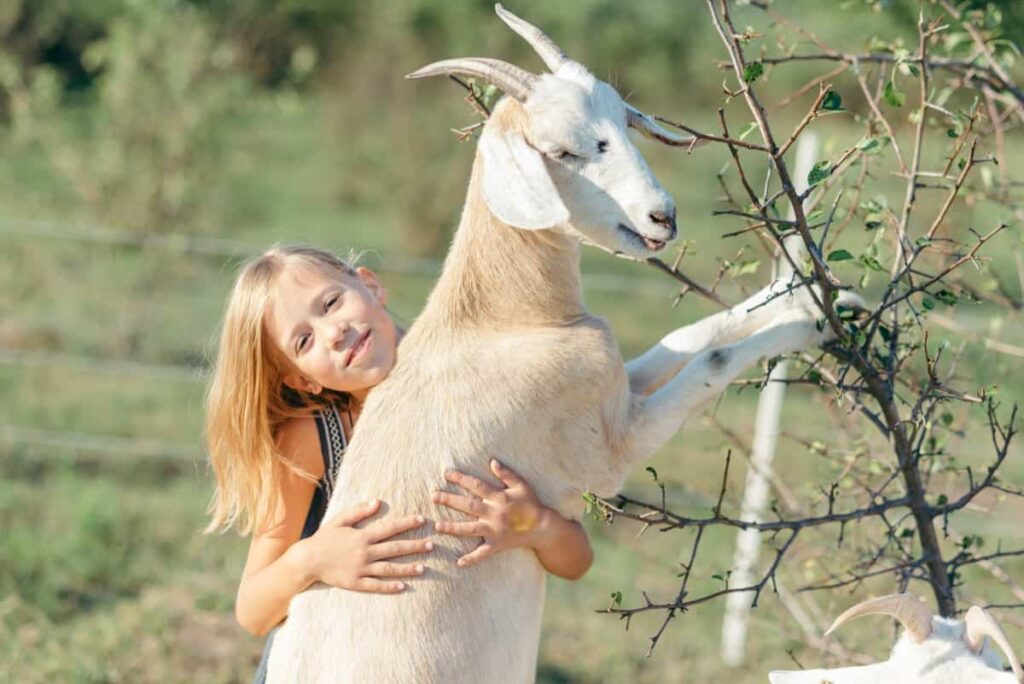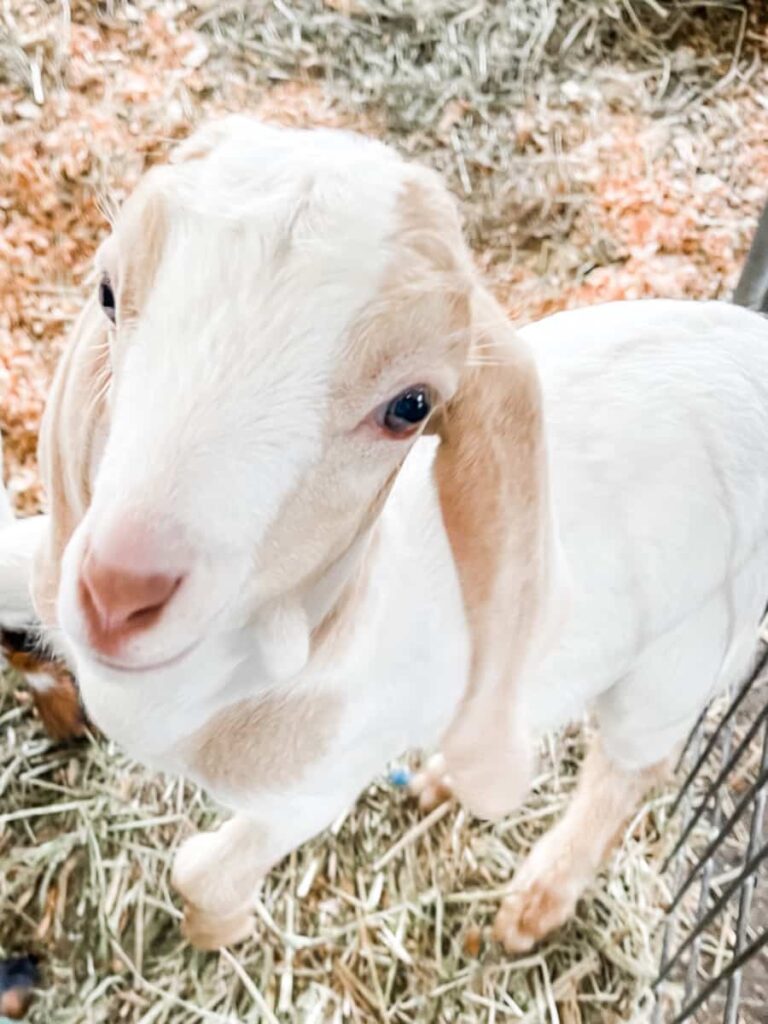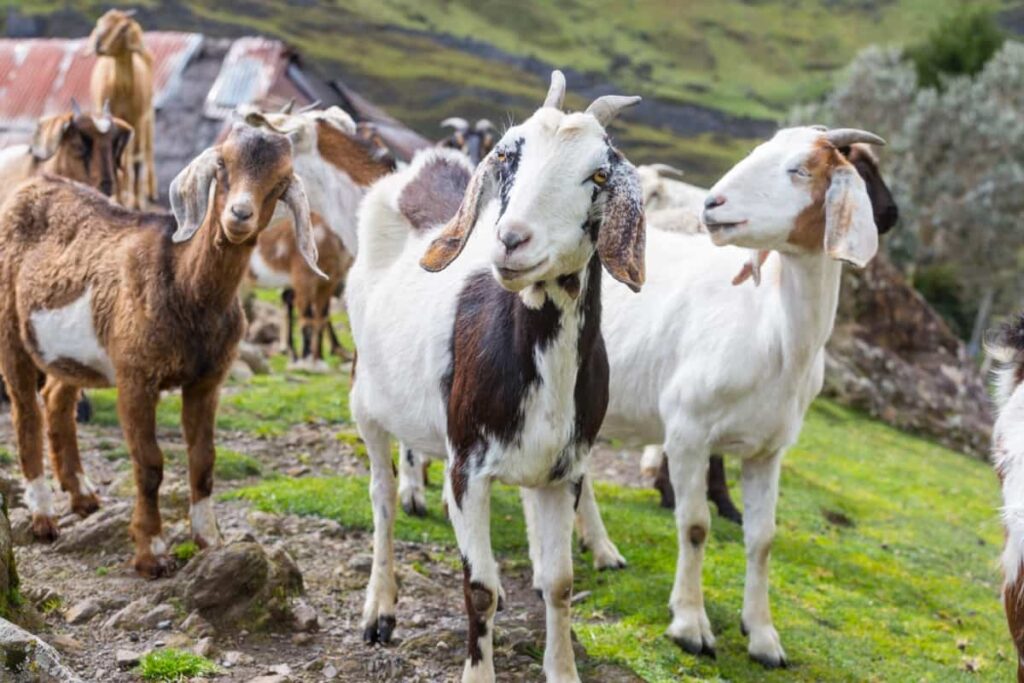Starting a Sangamneri goat farm is exciting but requires careful consideration and planning. Originating from the rural economy of Nasik, Ahmednagar, and Pune districts in Maharashtra, the Sangamneri goats have gained popularity due to their hardiness. Moreover, their ability to thrive on minimal resources makes them ideal for small-scale farmers with limited land and resources.

Benefits of Sangamneri Goat Farming
- Sangamneri goats are versatile breed that serves multiple purposes in the farming industry. Primarily known for their meat production, these goats have gained popularity amongst farmers in India.
- Another advantage of Sangamneri goat farming is its relatively low maintenance requirements. Additionally, they are efficient feed converters, meaning they can derive the maximum nutrition from available resources while minimizing wastage.
- The breed’s high adaptability to different climates makes it suitable for rearing in various regions of India.
- By providing proper housing facilities, nutritious feeding options, regular health care routines, and implementing effective breeding strategies, aspiring goat farmers can set themselves up for success in Sangamneri goat farming.
- With dedication and sound management practices, this venture can yield substantial profits while helping meet the growing demand for high-quality goat meat.
Sangamneri Goat Origin
Sangamneri goat farming is a lucrative venture that holds immense potential for farmers in the rural areas of Nasik, Ahmednagar, and Pune districts of Maharashtra. This breed has been specifically developed for its meat production capabilities and can also provide a decent amount of milk daily.
Information about Sangamneri Goats
| Breed name | Sangamneri |
| Origin | Maharashtra |
| Average Body weight | Adult Male – 39 to 42 kgAdult Female – 32 to 34 kg |
| Size | Medium size animal with long legs |
| Cost | Male goat of Sangamneri cost 300-350 Rs/kg (live weight). Female goats cost about 275-300 Rs/kg (live weight). |
Sangamneri Goat Raising Purpose
The Sangamneri breed is primarily raised for meat production and has gained popularity in various parts of India, particularly in Maharashtra. These goats are known for their excellent meat quality, making them a lucrative choice for farmers looking to enter the livestock business. The demand for goat meat has been steadily increasing over the years, both domestically and internationally.
With its tender and succulent meat, the Sangamneri breed offers great potential for profitability in this market. Additionally, these goats have good growth rates and can reach market weight at an early age, which further adds to their appeal. In addition to meat production, some farmers raise Sangamneri goats for milk. While not as high-yielding as dairy-specific breeds, these goats can still produce around 0.5 to 1 kilogram of milk per day during lactation periods that last approximately 160 days.
Housing Management to Start Sangamneri Goat Farm
- Providing a clean and comfortable living environment is crucial for the health and well-being of these animals.
- A sturdy shelter that protects them from extreme weather conditions is essential. The shelter should have proper ventilation to ensure good air circulation and prevent the buildup of harmful gases.
- The flooring material should be easy to clean and disinfect regularly to minimize the risk of diseases spreading among the herd. Good drainage is also important to prevent waterlogging in case of heavy rains.
- Creating a safe and suitable housing setup for Sangamneri goats is vital to their overall health and productivity.
In case you missed it: Jakhrana Goat Farming: A Comprehensive Guide

Things to Consider When Starting a Sangamneri Goat Farm
- You need to have adequate space for your goat farm. Sangamneri goats require proper housing facilities that protect them from harsh weather conditions and predators. Ensure the shelter is spacious enough for the goats to move around comfortably.
- Feeding plays a crucial role in maintaining healthy goats. Please provide them with a balanced diet of fresh grass, quality hay, and nutrient-rich concentrates. Regular access to clean water should also be ensured.
- Like other livestock, Sangamneri goats may require regular health care checks. Find a reliable veterinarian who can assist with vaccinations, deworming, hoof trimming, and other necessary treatments.
Feeding Tips for the Health and Productivity of Sangamneri Goats
To ensure their well-being, provide them with a balanced diet. Sangamneri goats are primarily raised for meat production, so their diet should be protein-rich. This can be achieved by feeding them good quality green fodder, such as lucerne or berseem, and concentrates like grains and oilcake. Additionally, providing mineral supplements will help meet their mineral requirements. It is important to note that Sangamneri goats have different feeding requirements depending on age, weight, and lactation status.
For example, pregnant does need additional nourishment during gestation to support the growth of their kids. Regular monitoring of feed intake is necessary to avoid overfeeding or underfeeding. It’s also recommended to divide the daily ration into multiple meals for better digestion and nutrient absorption. Fresh, clean water should always be available for the goats. Adequate hydration is vital for maintaining good health and proper body functioning.
Average Body Weight of Sangamneri Goat
The adult male Sangamneri goat weighs between 39 to 42 kg, while the adult female weighs around 32 to 34 kg.
How to Care for Sangamneri Goats?
- Providing proper housing is essential. These goats thrive in clean, well-ventilated spaces that protect them from extreme weather conditions.
- Feeding is another crucial aspect of goat care. A balanced diet of fresh green fodder, dry roughage, and mineral supplements ensures optimal health and growth. Additionally, access to clean drinking water at all times is vital.
- Regular health check-ups are necessary to detect potential diseases or parasites early on. Vaccinations against common infections like PPR should be administered per the veterinarian’s recommendations.
- Proper grooming plays a significant role in maintaining the overall well-being of Sangamneri goats. Regular brushing helps remove dirt and loose hair while keeping their coat healthy and shiny.
- Creating a stress-free environment with ample space for exercise is crucial for these active animals. Providing them with sufficient room to roam freely promotes physical fitness and aids mental stimulation.
Health Care Tips for Sangamneri Goats
- Health care is a crucial aspect of Sangamneri goat farming. Proper health management ensures that your goats remain healthy and productive.
- Schedule regular vaccinations for Foot-and-Mouth Disease, Peste des Petits Ruminants, and Tetanus. Consult with a veterinarian to find the appropriate vaccination schedule.
- Implement a deworming program to control internal parasites such as worms and coccidia. Regularly monitor fecal samples for parasite infestations and treat them accordingly.
- Provide a balanced diet of high-quality roughage, concentrates, minerals, vitamins, and clean water. Ensure that feeders are cleaned regularly to prevent bacterial growth.
- Maintain clean living conditions by regularly cleaning the shed or housing area. This helps control the spread of diseases and reduces stress on the goats.
- Conduct routine health check-ups to detect signs of illness or infection early on. Prompt treatment can prevent complications and ensure a speedy recovery.
In case you missed it: Exploring the Art of Goat Farming in Kashmir Valley

Conclusion
Sangamneri goats are known for their excellent meat production qualities. The breed exhibits fast growth rates, allowing farmers to raise them specifically for meat purposes. Their tender and flavorful meat is highly sought after in local markets, presenting a profitable opportunity for those involved in goat farming.
Note: The images presented in this post are intended solely for representation purposes. The images are meant to serve as visual aids and should not be relied upon as accurate representations of their real-life counterparts.
- Goat Milking Practices and Equipment: A Beginner’s Guide
- Goat Farming for Fiber: Producing Mohair and Cashmere
- Maximizing Goat Milk Production: Tips for Dairy Goat Farmers
- Goat Farming as a Family Business: Strategies for Success
- Profitable Kenya Goat Breeds for Commercial Dairy and Meat Business
- Unlock the Secrets of Oberhasli Goat: Discover Raising and Management Practices
- Ultimate Guide to Myotonic Goats: Explore Profile to Raising
- Unlock the Secrets of Rove Goat: Discover Management Practices
- Ultimate Guide to Malwa Goat: Explore from Origin to Management Practices
Looking to buy pure sangamneri and osmanabadi pure bred goat pairs for breeding purpose.
Want to buy pure osamabadi and sangamneri goats.